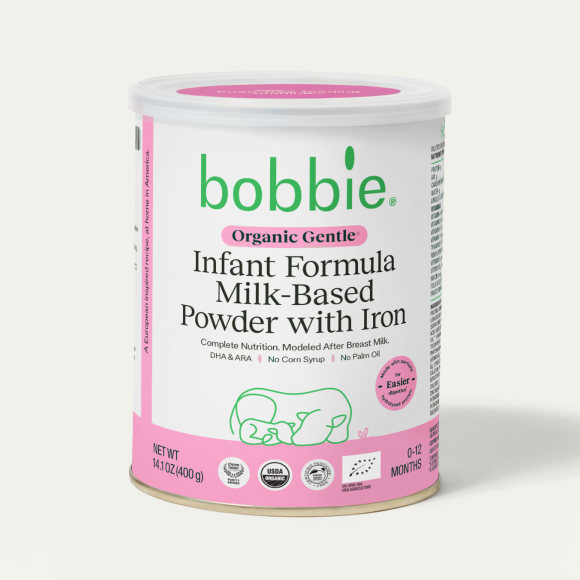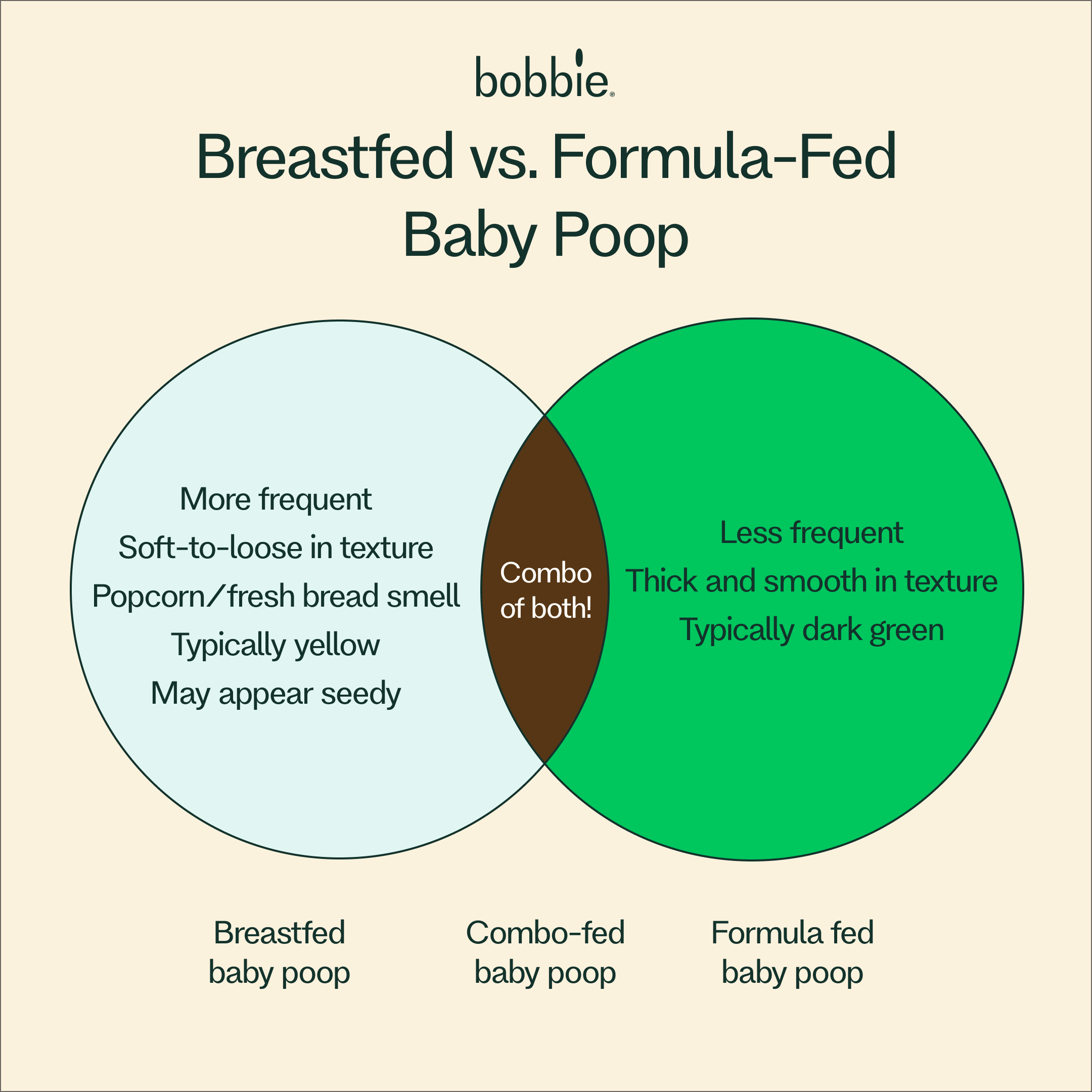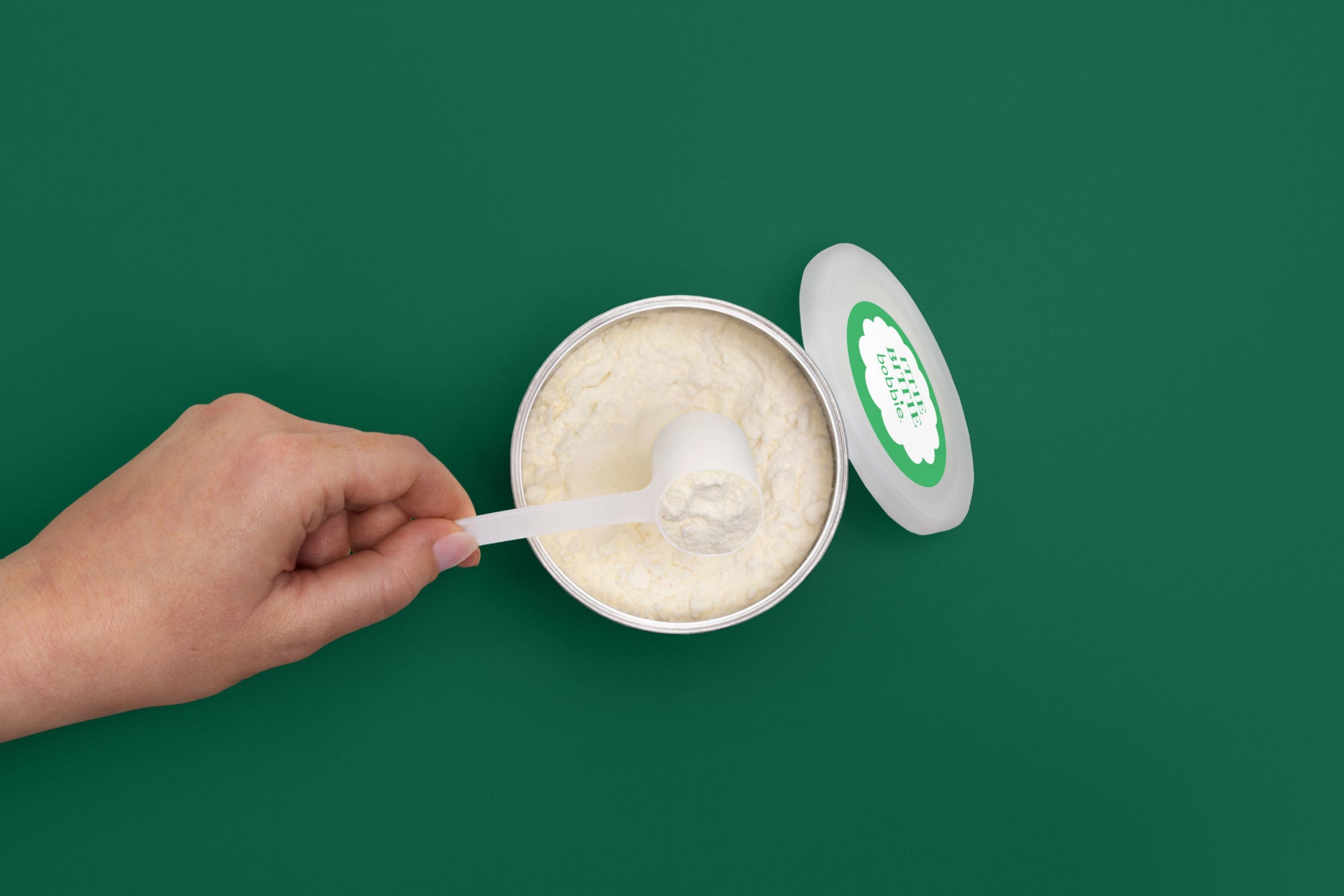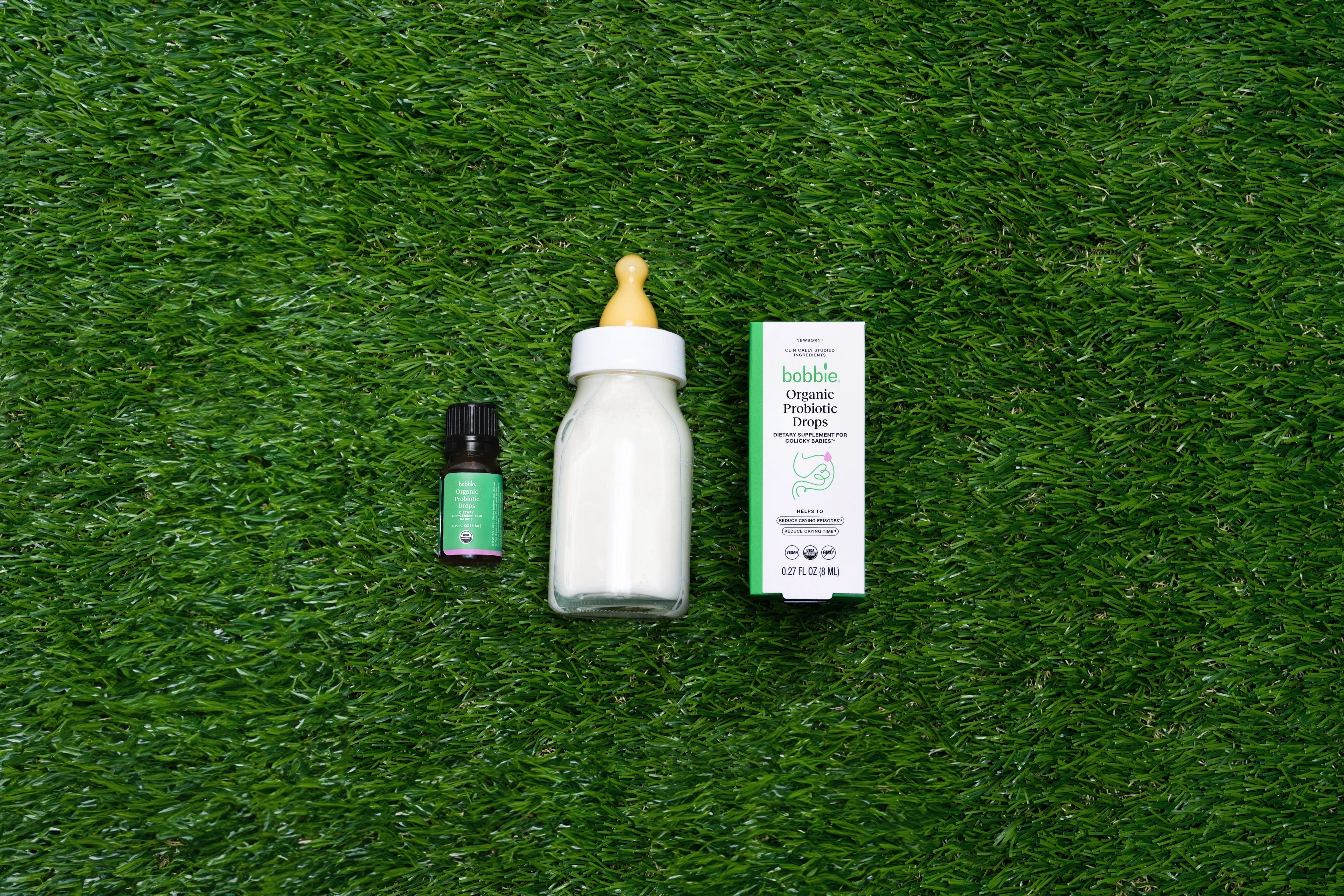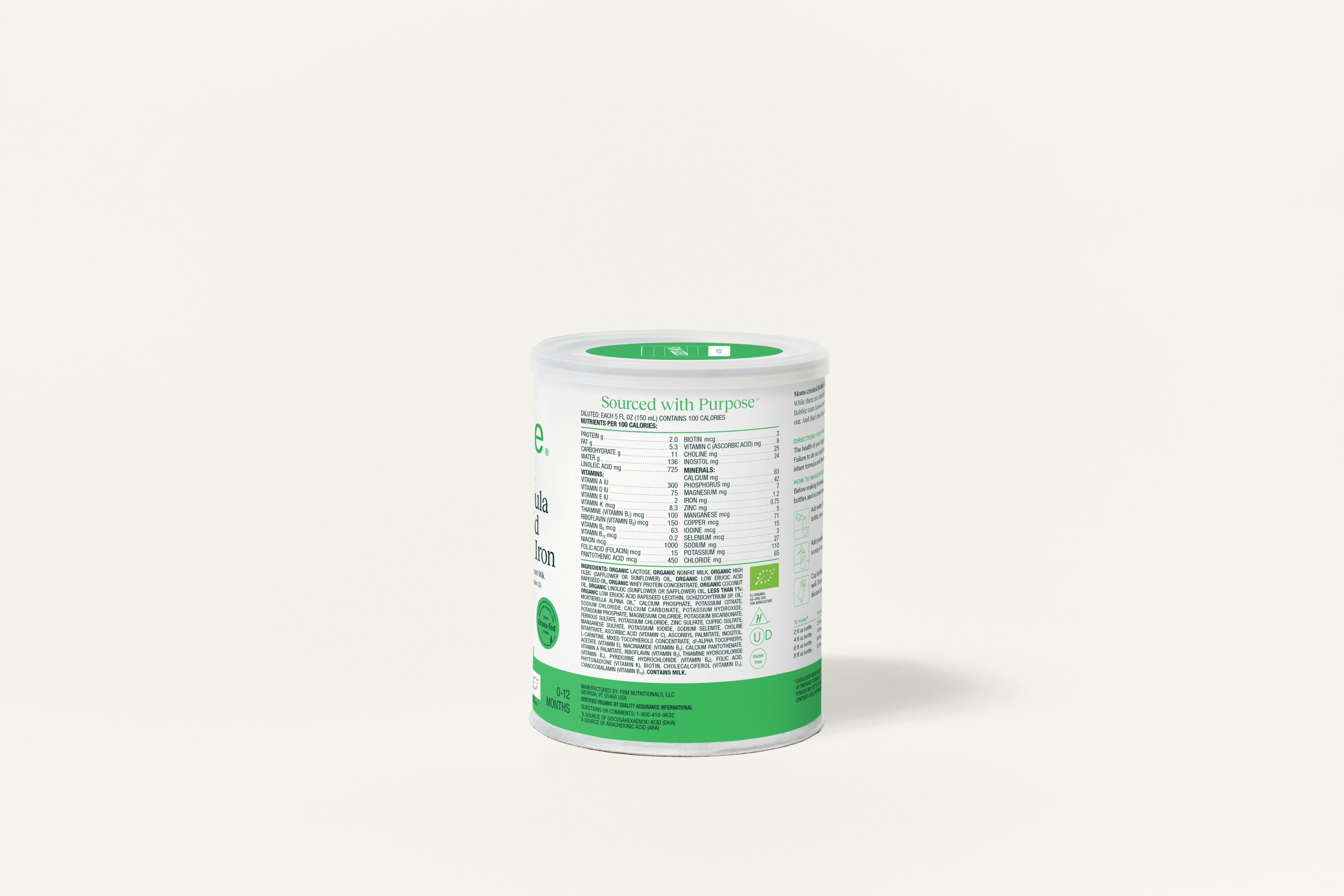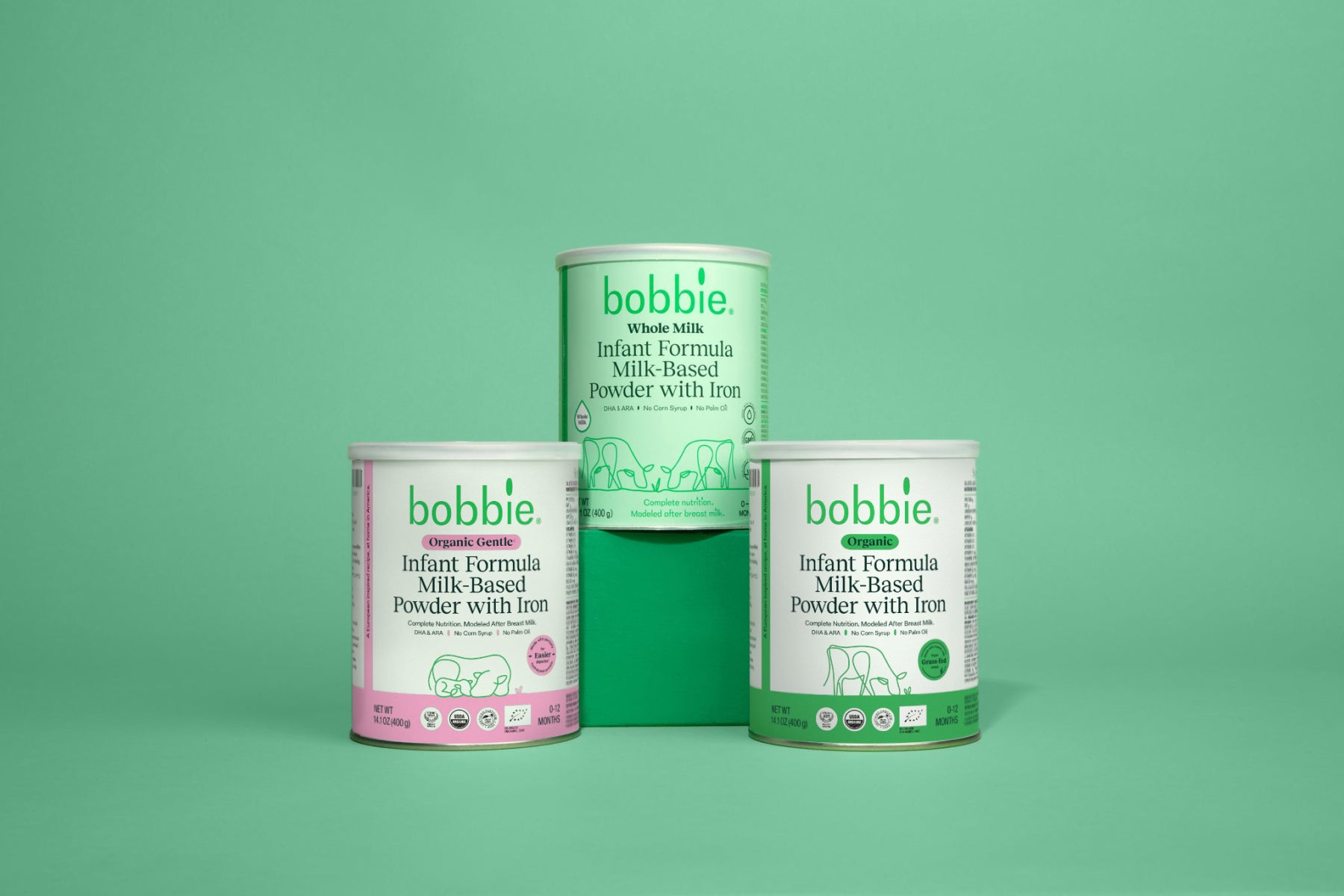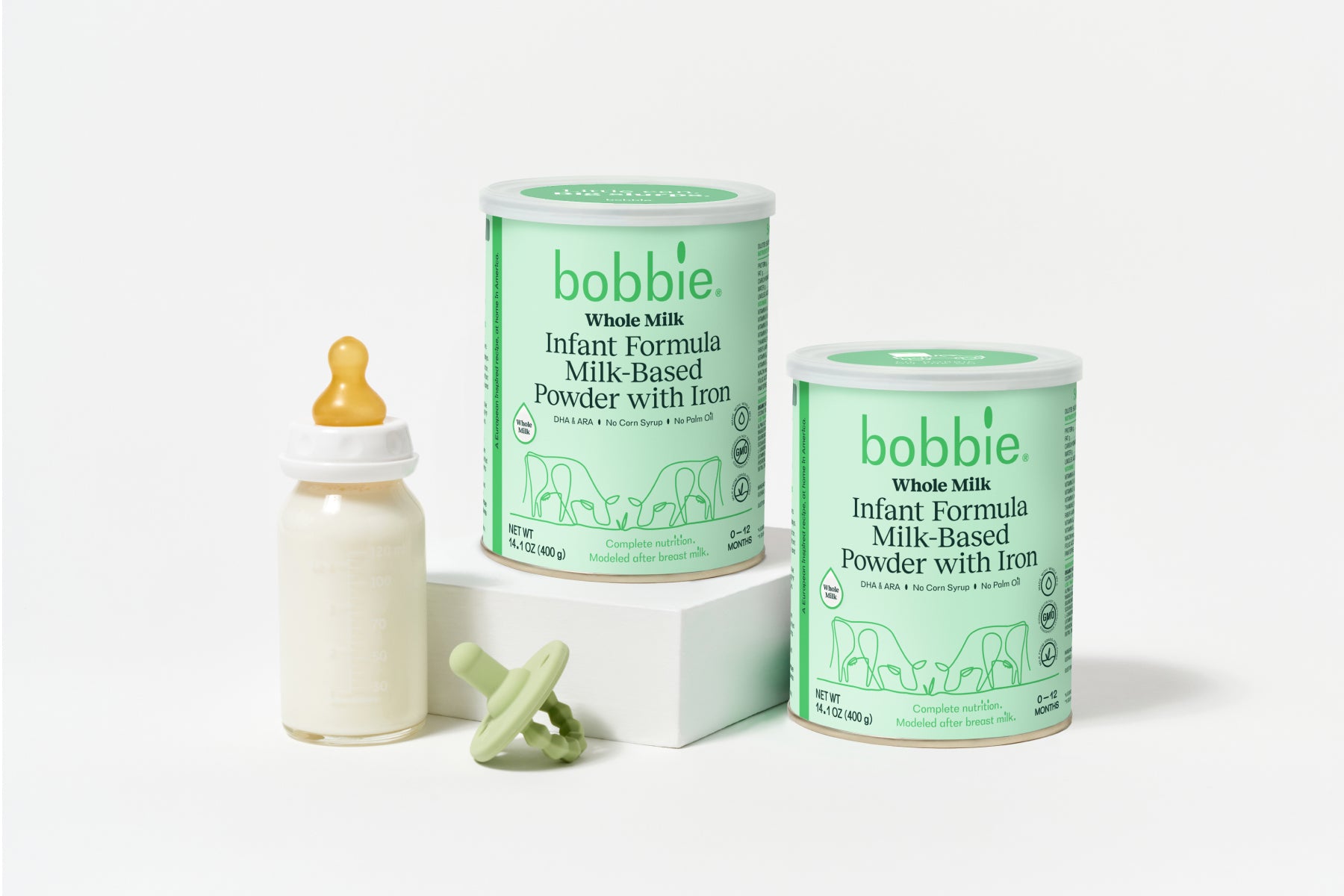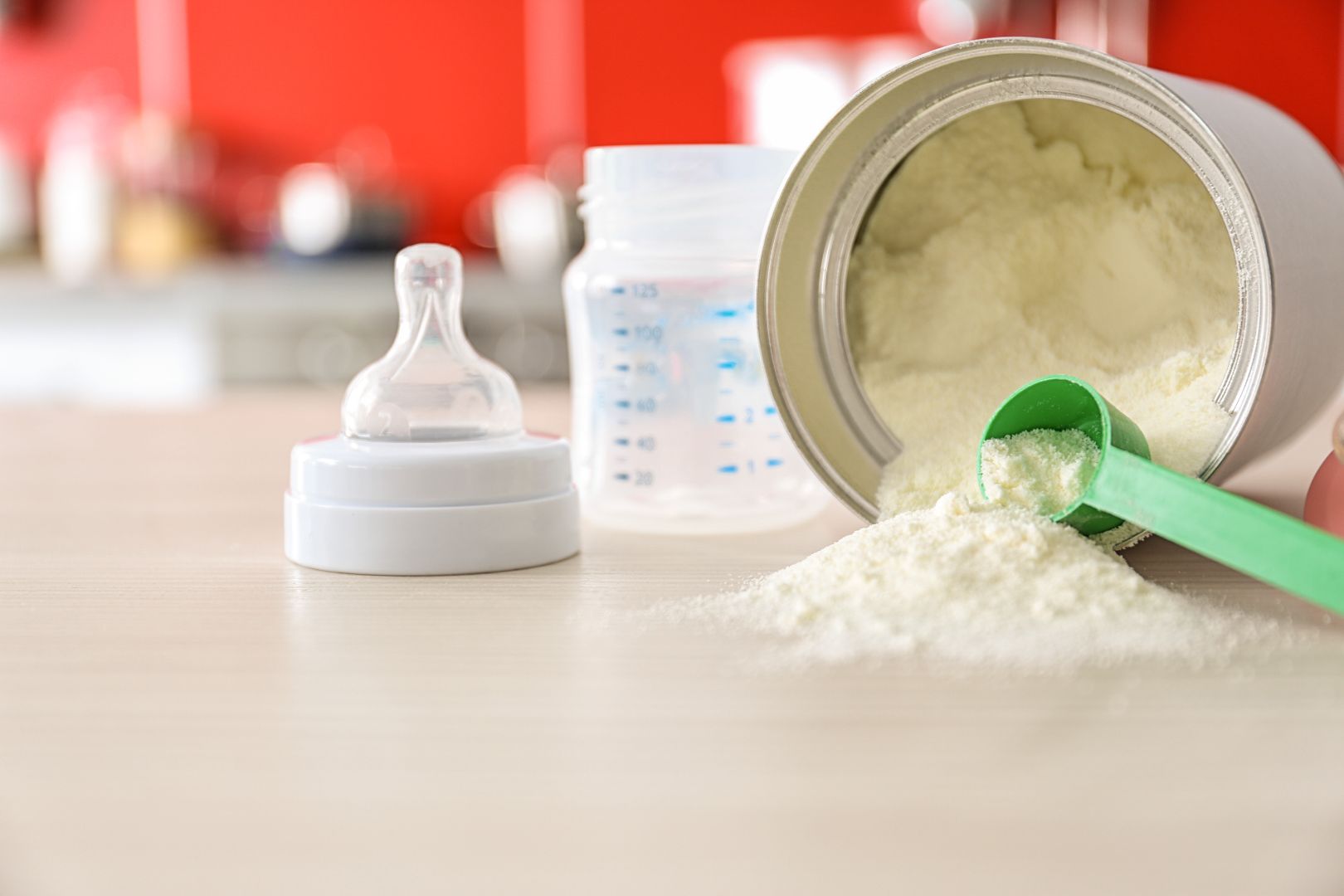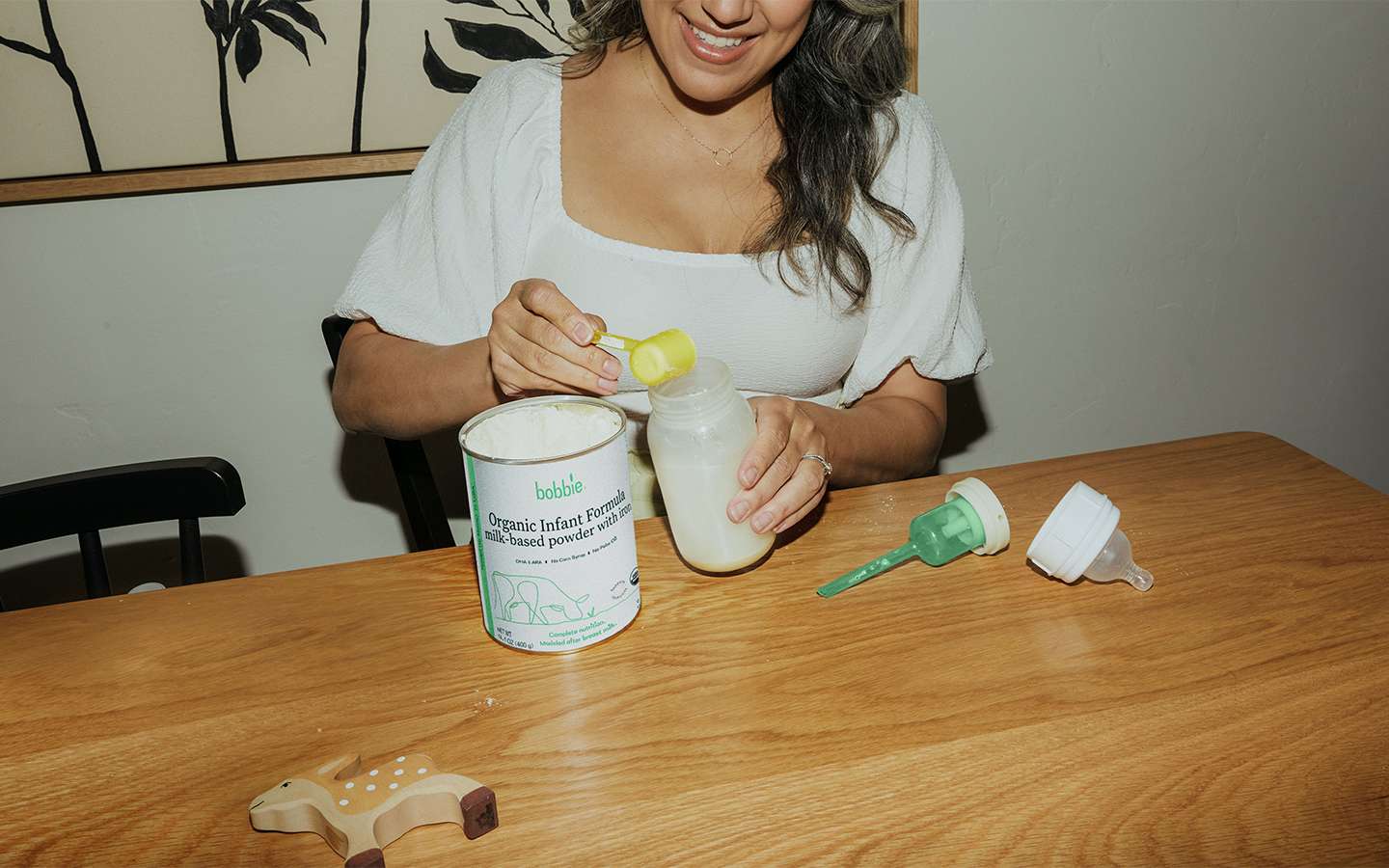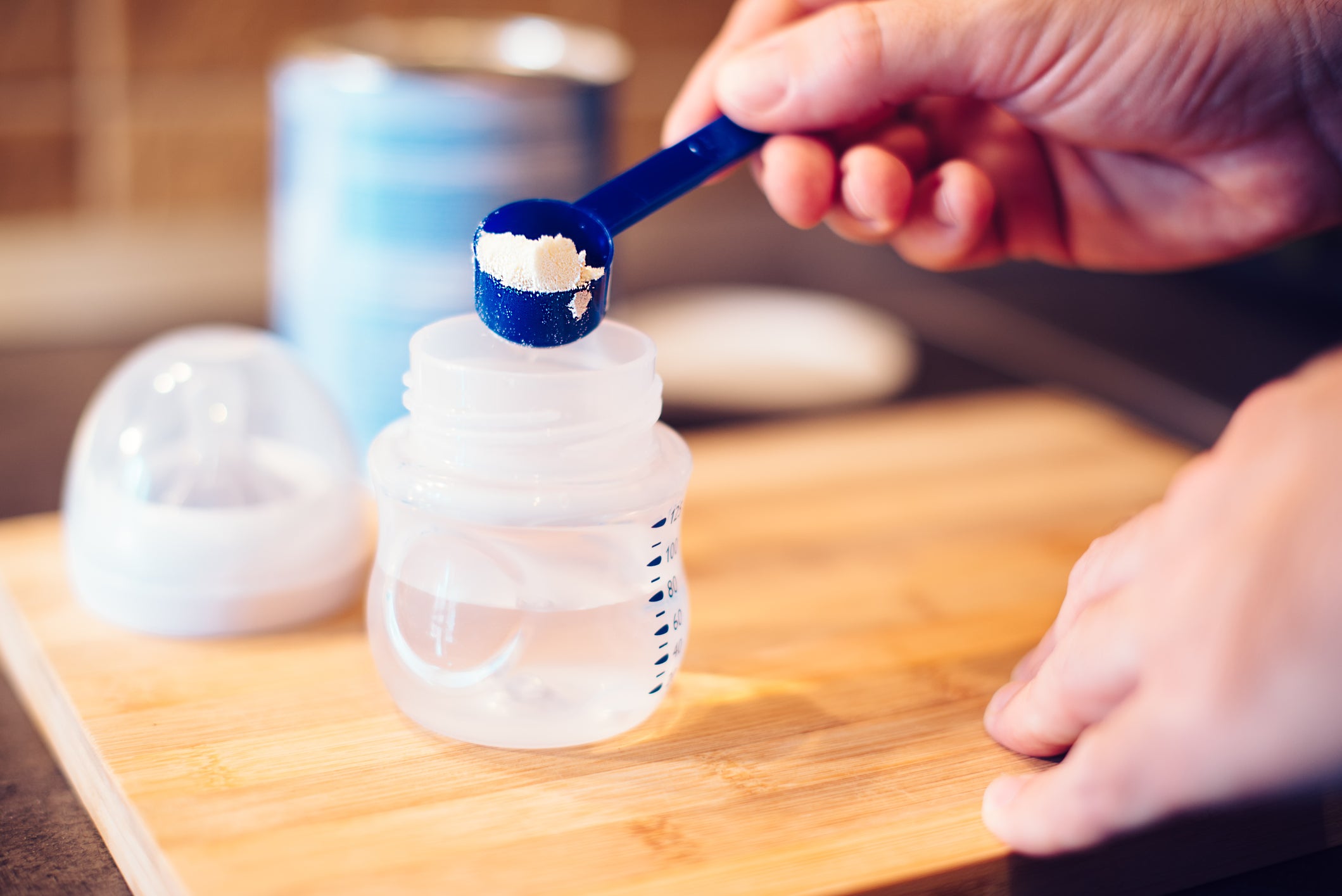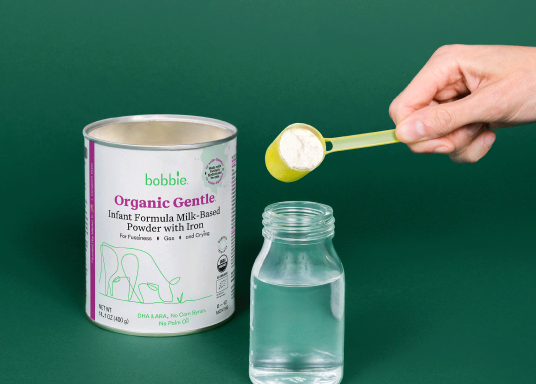Published September 6, 2024

How Much Should a 3 Month Old Eat? A Guide for Breastmilk and Formula
Welcoming a new baby is such a joyful and life-changing experience. As your little one hits the 3-month mark, you might be curious about their feeding schedule. These early months are all about rapid growth and baby development, so having a steady routine can make a big difference for both you and your little one.
Read on to discover a recommended feeding schedule for a 3-month-old, including an easy feeding chart to follow and answers to common questions you might run into along the way.
Why Your Infant Feeding Schedule Matters
Setting up a consistent infant feeding schedule is important for more than just your baby’s growth but also your peace of mind. It ensures your little one gets the balanced nutrition they need while helping to keep their digestive system on track. A regular feeding routine can also contribute to better baby sleep, as it helps them settle into a predictable rhythm.
For new parents, a set schedule is a great way to minimize the stress and uncertainty of irregular feedings — making it easier to organize and stay on top of your day. By sticking to a feeding plan that's just right for your 3-month-old, you can create a smoother, more harmonious routine that benefits everyone in the family!
How Much a 3-Month-Old Should Eat: Breastmilk and Formula
Nutrition is crucial for your baby's well-being, and choosing between breastmilk and formula is a big decision. The AAP recommends exclusively breastfeeding for approximately six months after birth. Fortunately, both breastmilk and infant formula offer essential nutrients and complete nutrition. Regardless of which you choose, knowing the right amount for your baby's age is key to supporting their healthy growth.
Let’s explore how much a 3-month-old should be eating at this stage and how both feeding options can support their development.
How much breastmilk should a 3-month-old eat?
Breast milk is perfectly designed to meet your baby’s unique needs and comes with a ton of benefits. By the time your baby hits 3 months, their stomach can handle more milk per feeding. On average, a 3-month-old might drink around 24-32 ounces of breast milk a day, spread across about 6-8 feedings. It’s best to feed breastfed babies on demand, keeping an eye out for hunger cues like rooting or sucking on their fists.
How much infant formula should a 3-month-old eat?
For formula-fed babies, a good rule of thumb is to offer about 3-5 ounces of infant formula per feeding, with 6-8 feedings in 24 hours. This adds up to around 24-32 ounces a day. Keep in mind, though, that every baby’s appetite is different, so watch for their cues and adjust the amount as needed.
Bobbie Organic Infant Formula is a USDA Organic, EU-style infant formula that meets all FDA requirements. It is a complete nutrition milk-based powder modeled after breast milk and is easy on tummies. It is non-GMO and doesn't have corn syrup, palm oil, or maltodextrin. Shop Bobbie today!
Shop Bobbie Organic Infant Formula

Follow This Easy Feeding Chart for a 3-Month-Old
We’ve put together a handy baby feeding chart to give you a clear picture of your little one’s feeding needs, showing the recommended amount of formula based on how many feedings they have each day. Remember, this chart is just a guideline — every baby’s needs vary, even day-to-day!
If you have any questions or concerns about your baby’s feeding frequency or amounts, be sure to discuss with your pediatrician.
|
Age |
Volume per Feeding |
Feedings per Day |
|
3 months |
3oz |
8-10 |
|
4oz |
6-8 |
|
|
5oz |
5-6 |
Here’s a sample feeding schedule for your 3-month-old, aiming to offer a feeding every 2.5-3 hours throughout the day:
- 7:00 A.M. — 4 oz. breastmilk or formula
- 9:30 A.M. — 3 oz. breastmilk or formula
- 12:00 P.M. — 4 oz. breastmilk or formula
- 3:00 P.M. — 3 oz. breastmilk or formula
- 5:30 P.M. — 3 oz. breastmilk or formula
- 8:00 P.M. — 4 oz. breastmilk or formula
- 11:00 P.M. — 3 oz. breastmilk or formula
- Nighttime feeding as needed — 3 oz. breastmilk or formula
Keep in mind, every baby is unique, so think of this schedule as a guideline. Be ready to adjust it based on their needs and feeding cues.
Potential Challenges and How To Address Them
Navigating the world of baby feeding can come with its share of challenges. Here’s a handy guide to help you address a few common issues:
- Inconsistent feeding patterns: Keep track of feeding times and patterns to gradually introduce consistency. A little planning can go a long way in establishing a routine that works for both you and your baby.
- Difficulty recognizing hunger cues: Learn to spot common hunger signs like fussing or lip-smacking. These cues can help you better understand when your baby is ready to eat.
- Balancing feeding times and sleep schedules: Create routines that align feeding times with sleep schedules. This way, you can enjoy a more harmonious daily rhythm for your little one.
- Overfeeding or underfeeding: Stick to the breastmilk or formula feeding amounts and frequencies recommended by your pediatrician. This ensures your baby gets just the right amount of nourishment without any guesswork. If your baby seems hungry after finishing a feeding, or you notice a large increase in spit-up, ask your child’s doctor whether it makes sense to increase or decrease milk volumes by feeding.
- Feeding difficulties and discomfort: Experiment with different feeding positions — such as the football hold, a side-lying position or seated — to find what’s most comfortable for your baby. If problems persist, don’t hesitate to consult your pediatrician for tailored advice.
Helpful Hints for a Successful 3-Month-Old Feeding Schedule
Creating a successful routine for your baby is all about responsive feeding and making adjustments as they grow. Here are some helpful hints to keep in mind:
- Establish a consistent feeding schedule to add structure and predictability to your baby’s day.
- Observe your baby’s feeding cues, like smacking lips, head turning, or tongue movements, to know when it’s time for a feeding.
- Feed your baby in a quiet, soothing space to make mealtimes more enjoyable for both of you and reduce distractions.
- Be prepared to adjust the feeding schedule during growth spurts as your baby’s appetite changes.
- Coordinate feeding times with your baby’s sleep routine to create a smoother daily rhythm.
- Regularly check in with your baby’s pediatrician to ensure your feeding plan meets their evolving needs.
Sign up to get the scoop on feeding, sleep, poop, and so much more. By singing up for email, you are to receive marketing emails from Bobbie and can manage your email preferences or unsubscribe at anytime

Your go-to resource for all things new baby.
3-Month-Old Feeding FAQs
Now, let’s tackle some common questions about 3-month-old feeding habits:
How much should a 3-month-old preemie eat?
A premature baby might have different dietary needs. It’s crucial to consult your pediatrician to figure out the right amount for your preemie. Generally, they may need smaller amounts more frequently than full-term babies, and your doctor might recommend a special preemie formula with extra minerals and calories per ounce.
How much should a 3-month-old eat in 24 hours?
Babies’ appetites can vary, but a good estimate is around 24-32 ounces per day — whether they’re on breastmilk or infant formula. If they consistently eat significantly more or less than this, it’s best to check in with your pediatrician.
Should my 3-month-old eat any solids?
At this stage, your baby’s digestive system is still maturing, so breastmilk or formula is all they need for the time being. The American Academy of Pediatrics recommends introducing solid foods around six months of age, once your baby can sit with support and is meeting other developmental milestones.
How do you know if a 3-month-old baby is still hungry?
Babies are excellent communicators — even at a young age! If they seem hungry after a feeding, they might suck on their fist or root around. If they still seem hungry after finishing a bottle, try offering an extra .5 to 1 ounce to see if that helps.
What should I do if my 3-month-old baby refuses to eat?
If this is the case, try changing their feeding position or offering a different type of bottle or nipple. Sometimes a little adjustment can make a big difference. If the refusal persists or is accompanied by other symptoms, consult your pediatrician to rule out any underlying issues.
How does eating affect my 3-month-old baby’s sleep?
Along with a feeding schedule, setting up a consistent sleep routine is crucial for your baby’s overall well-being. Sometimes, parents mix up hunger cues with sleepy cues, which can lead to overfeeding and/or an overtired, fussy baby.
Here are some tips to help you create a soothing sleep routine for your little one:
- Bedtime routine: Establish a calming bedtime routine to signal that it’s time to wind down. This could involve a warm bath, a gentle massage, reading a book or singing soft lullabies.
- Bedtime: Stick to a consistent bedtime, even if your baby’s daytime sleep varies. A regular bedtime helps set their internal clock and makes their sleep more predictable.
- Night feedings: Many 3-month-olds may still need one or more nighttime feedings. Keep these feedings quiet and low-key to help your baby drift back to sleep more easily.
- Sleep environment: Create a cozy sleep environment that promotes restful sleep. Keep the room dimly lit, maintain a comfortable temperature and consider using a white noise machine to block out any disruptive sounds.
- Growth spurts: Be ready for growth spurts, which might mess with your baby’s sleep and eating patterns. During these times, your little one may be hungrier and wake up more often. This is normal and usually lasts just a few days. If they show signs of hunger, offer a feeding even if it’s not scheduled.
How should I adjust the feeding schedule if my baby is sick or teething?
Sick or teething babies may need smaller, more frequent feedings or might eat less than usual. Adjust the schedule to their comfort — and give them a little extra love while you're at it. Consult your pediatrician for personalized advice to ensure they get the right nutrition during these times.
When should I start transitioning from breast milk or formula to other types of milk?
The transition from breast milk or formula to other types of milk typically starts around 12 months of age. Until then, stick with breast milk or formula, as your baby’s digestive system isn’t ready for cow’s milk or other alternatives before then.
Creating a Balanced Feeding Schedule for Your Growing Baby
As your 3-month-old embarks on this amazing journey of growth, setting up a balanced feeding schedule is crucial for their well-being and your peace of mind. By sticking to feeding guidelines, tuning into hunger cues and establishing good sleep habits, you’ll support your baby through this transformative time. Every baby is unique, so stay flexible and trust your instincts. For personalized advice, don’t hesitate to consult your pediatrician. Your love and dedication will keep nurturing your baby as they hit new milestones and grow into a happy, healthy individual.
Looking for a natural, organic option for your baby’s nutrition? Shop Bobbie Baby Formula today!
Bobbie Organic Infant Formula is a USDA Organic, EU-style infant formula that meets all FDA requirements. It is a complete nutrition milk-based powder modeled after breast milk and is easy on tummies. It is non-GMO and doesn't have corn syrup, palm oil, or maltodextrin. Shop Bobbie today!
Shop Bobbie Organic Infant Formula

The content on this site is for informational purposes only and not intended to be a substitute for professional medical advice, diagnosis or treatment. Discuss any health or feeding concerns with your infant’s pediatrician. Never disregard professional medical advice or delay it based on the content on this page.







